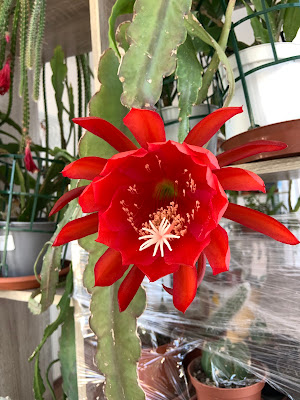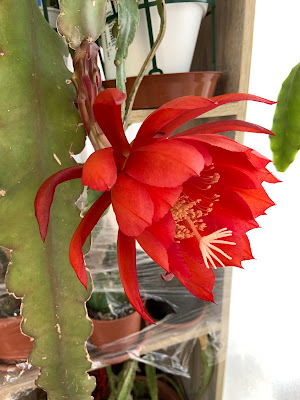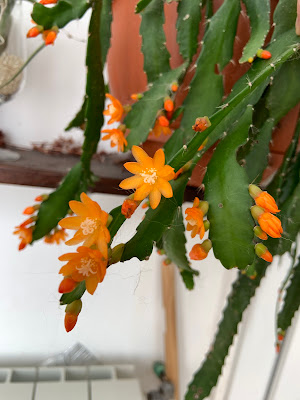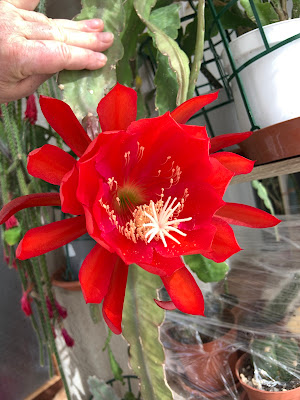My Epiphyllum collection has two new flowers. One, the red, is the largest flower I have had. Perhaps, if there is flowering someday, “Queen of the Night” will have an even bigger flower.
Read more: The Spring Flowering of Epiphyllum Begins
Here are some more tips to help you care for your Epiphyllum plants and encourage blooming:
1. Light and Temperature
Epiphyllums thrive in bright, indirect light. They prefer temperatures between 65-85°F (18-29°C) during the day and slightly cooler temperatures at night. Avoid exposing them to direct sunlight, especially during the hottest parts of the day.
2. Watering
During the growing season (spring and summer), water your Epiphyllums regularly, allowing the soil to dry out slightly between watering. Reduce watering in the fall and winter to mimic their natural dormancy period. Be cautious not to overwater as this can lead to root rot.
3. Soil and Potting
Epiphyllums prefer well-draining soil to prevent waterlogging. Repot your plants every 2–3 years or when they outgrow their pots. Use a cactus or orchid mix for optimal drainage.
4. Fertilizing
Feed your Epiphyllums with a balanced, water-soluble fertilizer diluted to half strength during the growing season. Reduce or stop fertilizing when the plants are dormant in the fall and winter. I noticed my cactuses feel better if I do not water them from November to March.
5. Humidity
Epiphyllums appreciate higher humidity levels, especially during the growing season. You can increase humidity by misting the plants or placing a humidity tray nearby.
6. Pruning and Maintenance
Remove any dead or decaying parts of the plant to promote healthy growth. Pruning can also help shape the plant and encourage new growth.
7. Flowering
Epiphyllums typically bloom in spring or early summer, producing stunning flowers that last for a few days. Some varieties may bloom at different times, so observing and enjoying the flowering period is essential.
Keep experimenting with different care techniques and enjoy the unique characteristics of each variety in your collection. Each plant has its own preferences and needs, so don't be afraid to try new things and see what works best for each individual succulent. You can create a thriving and diverse collection that brings you joy and satisfaction.






